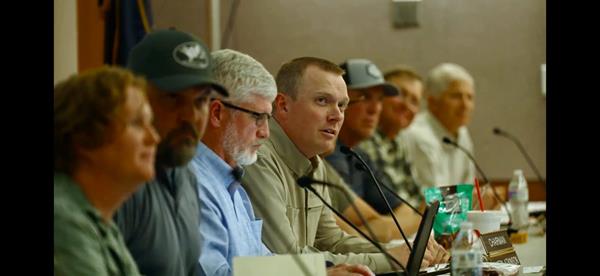
This month typically marks the halfway point of the application season for me. If you are holding this month’s magazine in your hands and not reading this via the eMagazine, then you’ve already noticed this issue is of the extra-large variety. As states change their application deadlines (like Utah in 2023), we try to get the most up-to-date accurate information possible, so we sometimes end up with dictionary-sized issues. I would suggest getting comfortable and blocking out some time for this one.
This Soapbox is going to be more in line with what I consider a rant, so I hope I don’t offend anyone. However, I realize I most likely will and I guess I’m OK with that, so here ya go.
With this issue having arguably two of our biggest states as far as page count in Utah and Colorado, I can’t help but look at the direction these two states are headed. Both have seen immense growth in their human populations in the last five years, but for the most part, this is where the similarities start to part ways. Colorado is seeing a major shift in ideology among the incoming population, and with this shift has come a more anti- hunting sentiment. This is poisoning the North American Model of Wildlife Conservation that has been the foundation for which hunters and anglers have been responsible for saving and restoring every form of wildlife Colorado now has on its landscape. This poison is spreading from the top down at the state level of government and can be seen on full display at the Colorado Wildlife Commission meetings with the recent appointment (by the governor) of three new members to the Commission, two of which have no interest in hunters or hunting. At this point, the Commission is barely holding on with people who hold hunters and anglers in high regard for the hard work and hundreds of millions of dollars they have donated to wildlife conservation over the years. If you spend any time at all watching one of these meetings, it is not hard to figure out who has their bread buttered by special interest groups and must toe that line. These individuals have the mindset that predators have priority over all ungulate populations and native Coloradans who have been responsible for shaping the landscape of Colorado and creating the environment for wildlife to flourish.
If I am being honest, another similarity in both states is the top-down approach to Utah’s Wildlife Commission board. The big difference is that Utah’s ideology is still that hunters are a resource and should be looked upon to help solve management hurdles through hunting. Although I may not agree with every decision Utah’s wildlife board makes, I can whole-heartedly say every single one of them loves wildlife and believes in the North American Model of Wildlife Conservation. Utah’s Division of Wildlife once bought into the “Predator populations cannot impact ungulate populations” until more and more collared studies were rendering the exact opposite results. Utah has since changed their tune and is allowing hunters the tools they need to bring some kind of balance back to the predator/prey relationship, so all species are managed to the available resource while maintaining hunting as the primary tool. As long as Utah continues this type of management and keeps people on the Commission who have wildlife and hunting in their hearts, Utah wildlife populations and hunting have a bright future. Colorado’s wildlife populations and future of hunting, on the other hand, are not heading in a good direction.